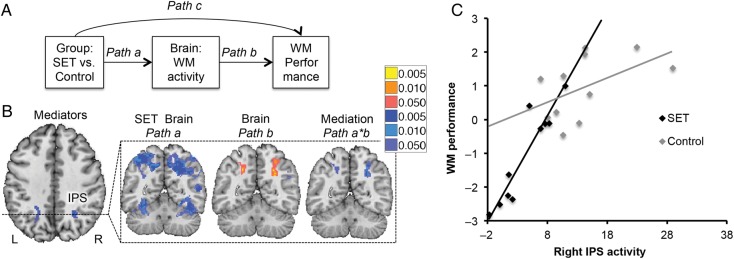Figure 4.
Brain mediators of social evaluative threat (SET) effects on working memory (WM). (A) Mediation path diagram. Mediation was used to search for Brain activity [N-back vs. Rest] that formally explained the relationship between Group and WM performance on a voxel-wise basis. (B) Negative mediators. Deactivation in bilateral intraparietal sulcus (IPS) mediates the relationship between Group and WM performance, suggesting that less activity in this region underlies SET-related WM impairment. The IPS has been implicated in studies of both WM and attention. For instance, IPS activates when attention is directed to a spatial location where the presentation of a stimulus is expected in the absence of visual information as shown in Kastner et al. 1999. Red/yellow: positive effects; blue: negative effects. (C) Scatterplot depicting WM performance as a function of activation in the left IPS and group. Overall, WM performance relates positively to left IPS activation; the SET group shows less activation in this region and impaired WM performance relative to the Control group. L, left; R, right.

